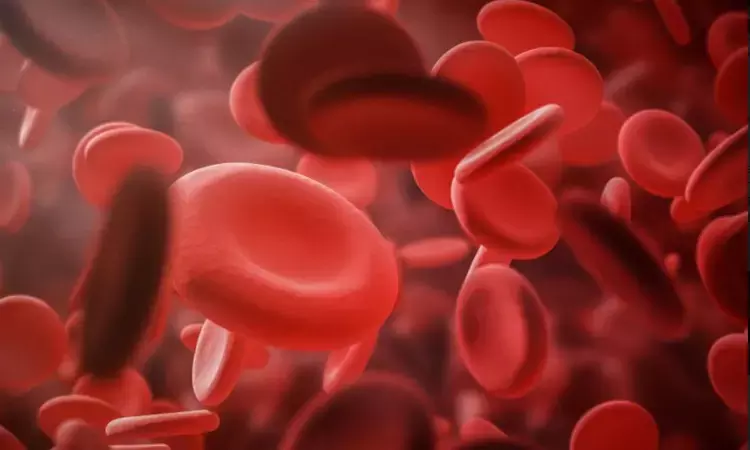- Home
- Medical news & Guidelines
- Anesthesiology
- Cardiology and CTVS
- Critical Care
- Dentistry
- Dermatology
- Diabetes and Endocrinology
- ENT
- Gastroenterology
- Medicine
- Nephrology
- Neurology
- Obstretics-Gynaecology
- Oncology
- Ophthalmology
- Orthopaedics
- Pediatrics-Neonatology
- Psychiatry
- Pulmonology
- Radiology
- Surgery
- Urology
- Laboratory Medicine
- Diet
- Nursing
- Paramedical
- Physiotherapy
- Health news
- Fact Check
- Bone Health Fact Check
- Brain Health Fact Check
- Cancer Related Fact Check
- Child Care Fact Check
- Dental and oral health fact check
- Diabetes and metabolic health fact check
- Diet and Nutrition Fact Check
- Eye and ENT Care Fact Check
- Fitness fact check
- Gut health fact check
- Heart health fact check
- Kidney health fact check
- Medical education fact check
- Men's health fact check
- Respiratory fact check
- Skin and hair care fact check
- Vaccine and Immunization fact check
- Women's health fact check
- AYUSH
- State News
- Andaman and Nicobar Islands
- Andhra Pradesh
- Arunachal Pradesh
- Assam
- Bihar
- Chandigarh
- Chattisgarh
- Dadra and Nagar Haveli
- Daman and Diu
- Delhi
- Goa
- Gujarat
- Haryana
- Himachal Pradesh
- Jammu & Kashmir
- Jharkhand
- Karnataka
- Kerala
- Ladakh
- Lakshadweep
- Madhya Pradesh
- Maharashtra
- Manipur
- Meghalaya
- Mizoram
- Nagaland
- Odisha
- Puducherry
- Punjab
- Rajasthan
- Sikkim
- Tamil Nadu
- Telangana
- Tripura
- Uttar Pradesh
- Uttrakhand
- West Bengal
- Medical Education
- Industry
Dried blood spot adequate for Vitamin A deficiency diagnosis, Finds study

Vitamin A deficiency (VAD) and anemia are the most prevalent nutritional deficiency in children globally. The dried blood spot (DBS) method has been used in prevalence studies of VAD and anemia in different age groups, but it has not yet been validated for children.
However, reports from a recent study show that the dried blood spot (DBS) method is adequate for the diagnosis of Vitamin A deficiency in preschool children, but not for anemia, as published in the Journal of Nutrition.
Alessandra da Silva Pereira and colleagues from the Department of Fundamental Nutrition, Nutrition School, Federal University of the State of Rio de Janeiro, Rio de Janeiro, Brazil aimed to assess the reproducibility and validity of the dried blood spot technique in the diagnosis of Vitamin A deficiency and anemia in preschoolers.
The researchers collected venous and capillary blood samples from a representative sample of children lesser than 5 years old who attended the public health system in Rio de Janeiro. Serum retinol and hemoglobin were measured in 235 and 182 children, respectively.
Serum retinol was measured with HPLC and hemoglobin was measured with spectrophotometry in samples of venous (gold standard) and capillary blood (test method, DBS). DBS reproducibility was assessed with the intraclass correlation coefficient (ICC), κ, and prevalence-adjusted and bias-adjusted κ (PABAK).
DBS validity was assessed with sensitivity, specificity, accuracy index (AI), positive predictive value (PPV), and negative predictive value (NPV).
The study revealed that DBS method showed very good reproducibility for serum retinol (ICC = 0.94, κ = 0.83, PABAK = 0.76) and very good/good reproducibility for hemoglobin (ICC = 0.86, κ = 0.69, PABAK = 0.69). Moreover, the prevalence rates for VAD by the reference and test methods were 11.5% and 11.9%, respectively, whereas the anemia rates were 19.2% and 46.2%.
The authors also highlighted that the test method showed low sensitivity (33%) and PPV (32%) and high specificity (91%) and NPV (92%) for serum retinol. For hemoglobin, the test method showed fair sensitivity (71%), low PPV (30%), fair specificity (60%), and high NPV (90%). AI was 83% for VAD and 62% for anemia.
As a result, it was concluded that DBS method is considered adequate for the diagnosis of VAD in preschool children, but not for anemia.
Dr. Nandita Mohan is a practicing pediatric dentist with more than 5 years of clinical work experience. Along with this, she is equally interested in keeping herself up to date about the latest developments in the field of medicine and dentistry which is the driving force for her to be in association with Medical Dialogues. She also has her name attached with many publications; both national and international. She has pursued her BDS from Rajiv Gandhi University of Health Sciences, Bangalore and later went to enter her dream specialty (MDS) in the Department of Pedodontics and Preventive Dentistry from Pt. B.D. Sharma University of Health Sciences. Through all the years of experience, her core interest in learning something new has never stopped. She can be contacted at editorial@medicaldialogues.in. Contact no. 011-43720751
Dr Kamal Kant Kohli-MBBS, DTCD- a chest specialist with more than 30 years of practice and a flair for writing clinical articles, Dr Kamal Kant Kohli joined Medical Dialogues as a Chief Editor of Medical News. Besides writing articles, as an editor, he proofreads and verifies all the medical content published on Medical Dialogues including those coming from journals, studies,medical conferences,guidelines etc. Email: drkohli@medicaldialogues.in. Contact no. 011-43720751


